From oversized meatballs to drowning pasta in sauce, there’s a long list of American misconceptions about Italian food. If you’ve ever ordered “chicken Alfredo” in Rome, this one’s for you.
Here are some of the most common Italian food myths Americans believe. Prepare to laugh (and maybe cringe) alongside your Italian friends.

Italian Food Myths That Make Italians Laugh Out Loud

What many Americans call Italian food would make most Italians raise an eyebrow (and possibly call their nonna for emotional support).
Spaghetti swimming in sauce, garlic bread with every meal, chicken on pasta? Mamma mia, no. While Italian-American cuisine surely has its appeal, it often bears little resemblance to the real thing found in Italy.
Truth is, there’s no such thing as one “Italian cuisine”. Italy has 20 regions, each with its own distinct food culture. What’s on your plate in Bologna looks nothing like what’s served in Naples or Palermo.
No spaghetti Bolognese in Emilia Romagna but tagliatelle al ragù. In Sicily, it’s pasta with sardines, fennel, or raisins. Alfredo? Doesn’t exist.
A tourist planning their first trip to Italy, a foodie craving culinary truth, or a home cook trying to respect Italian roots beyond the clichés might all need this guide. We'll debunk the biggest Italian food myths and help you separate fact from fettuccine fiction.
(Also, don’t miss our review of Tucci in Italy from an Italian perspective).
Listen to the podcast version of the article with the voice of Monna Lisa & Leonardo
10. Cheese goes on everything, one of the cringiest Italian food myths
Here’s one of those common Italian food mistakes Americans make without realising: asking for cheese on every dish. Cheese isn’t a default topping but a thoughtful addition.
Try sprinkling Parmigiano on a seafood pasta and watch your waiter pause in horror. Some dishes, especially those with fish or delicate sauces, are meant to be enjoyed as is. No hate, but... anche no.
Visit a Parmigiano factory9. Fettuccine Alfredo is a classic Italian dish
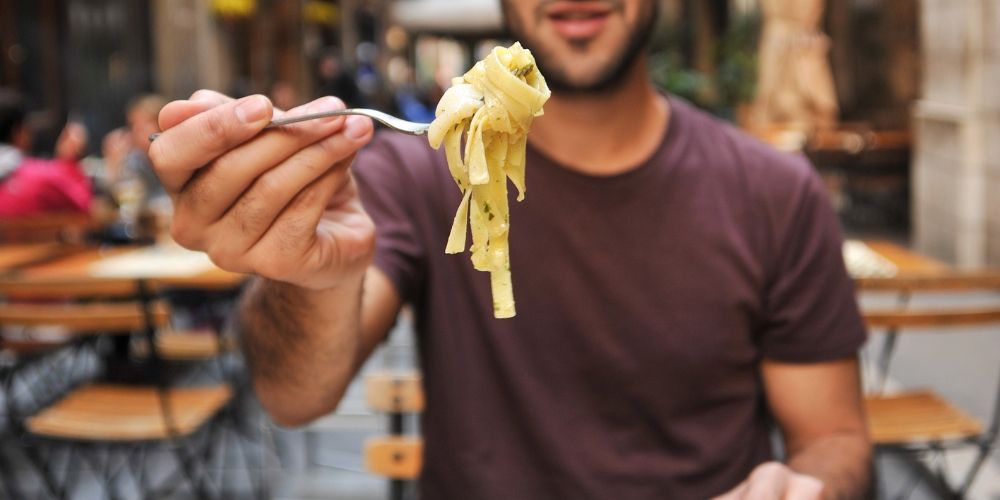
This dish barely exists in Italy and lives almost exclusively on American menus. While it was invented in Rome, it was never intended as a national classic. Italians rarely drown pasta in cream as they prefer it lightly dressed.
Never ask for it unless you’re at Alfredo alla Scrofa in Rome, the restaurant where it was originally created. Otherwise, just order a simple dish of pasta burro e Parmigiano. Of all the enduring Italian food myths, this one tops the list of American misconceptions about Italian food.
Try the real fettuccine Alfredo8. Italians drink cappuccino at any time of day
Ordering a cappuccino after lunch is a huge Italian food mistake Americans make. Cappuccino is strictly a morning affair in Italy. It's a top choice for breakfast, especially if paired with a cornetto (croissant), but after midday, asking for milk-heavy coffee is considered odd, if not slightly scandalous.
Among the American misconceptions about Italian food, this one never fails to make locals smirk. Want to blend in? Sip your cappuccino before 12 p.m. and switch to espresso after that. Here’s how to order "un caffè" at the bar.
7. Spaghetti and meatballs is a traditional meal
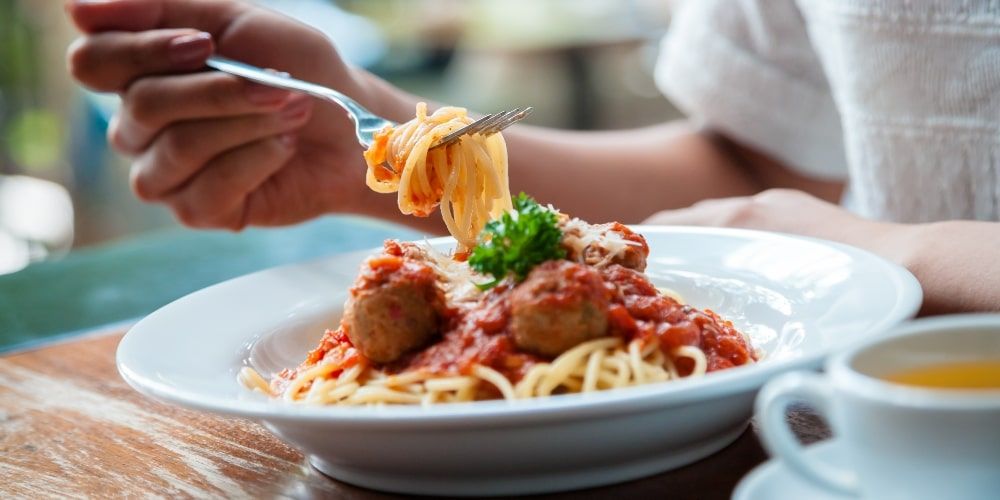
It’s one of the most widespread Italian food myths. In Italy, polpette (meatballs) absolutely exist, but they’re served as a second course, never plopped on top of spaghetti.
The idea of mixing large meatballs with pasta is a textbook case of American misconceptions about Italian food. If you’re in Italy, enjoy your pasta first, then your meat: separately, and with pride.
6. Garlic bread is served with every meal
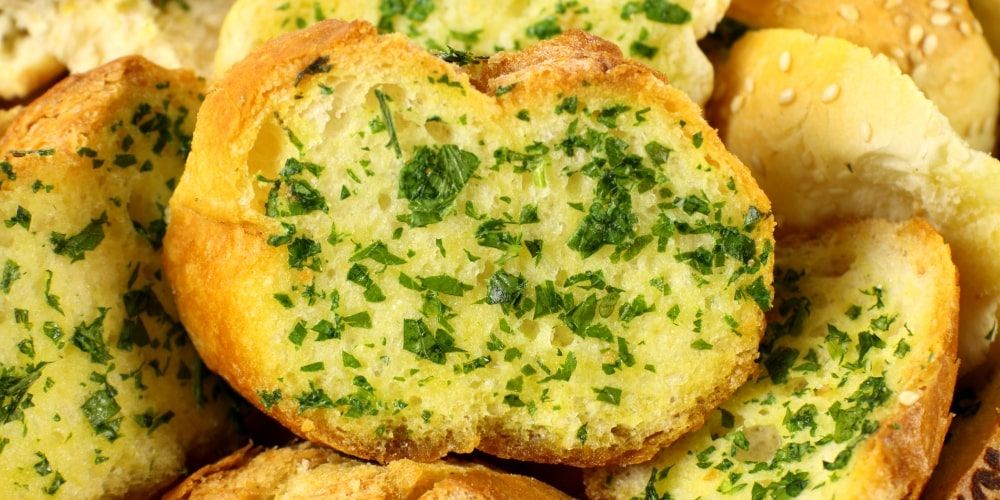
Those garlic bread reels on Instagram seem delicious, but it’s simply not a thing in Italy. What you will find is bruschetta: toasted bread drizzled with olive oil, topped with chopped cherry tomatoes or other seasonal ingredients, and sometimes (just sometimes) rubbed with raw garlic.
It’s a world away from the buttery loaves served in many restaurants abroad. Its popularity in the U.S. is a clear example of how Italian food myths can take on a life of their own. While garlic is used in Italian cooking, it’s rarely the star. So if you’re waiting for that bread basket packed with garlic and parsley, know that it might never arrive.
5. Every Italian lunch is a feast

Few Italian food myths are as persistent in American pop culture as this one. Contrary to popular belief, not every Italian lunch is a multi-course extravaganza worthy of a wedding reception. Many Italians keep it light and quick: a panino, a simple pasta al pomodoro, or maybe just a salad and espresso before heading back to the office.
Yes, Sundays and special occasions still call for abundant meals with family, but the everyday lunch is far more practical. Tourists may indulge in three-hour lunches (and rightly so!), but for locals, that’s the exception, not the rule.
4. Italian pizza is extra-large and loaded with toppings
Bigger doesn’t mean more Italian. A giant, cheesy, topping-loaded pizza is not the Italian way. A single pizza is intended for no more than one person. The dough is light, and the toppings are few.
You won’t find stuffed crusts or a mountain of pepperoni. If it’s your first time, try the classic Neapolitan pizza: a ruota di carro (wide and thin, spilling off the plate) or a canotto (with a puffed, airy crust).
Read what the world’s #1 pizza chef has to say and find out the best Naples' pizzerie for 2025.
3. Italians are obsessed with Italian food

This one is slightly true, but not in the way you might think. Italians aren’t closed-minded about other cuisines, but they do take their food very seriously. It’s not snobbery.
Most Italians don’t realise how passionate they are until they go on Erasmus and discover their flatmate has “cooked dinner” by pouring ketchup on pasta. That’s when it hits us. We appreciate the good intentions, just don’t mess with carbonara. Or put cream in it. Or pineapple on pizza.
2. Italians love Chicken Parm
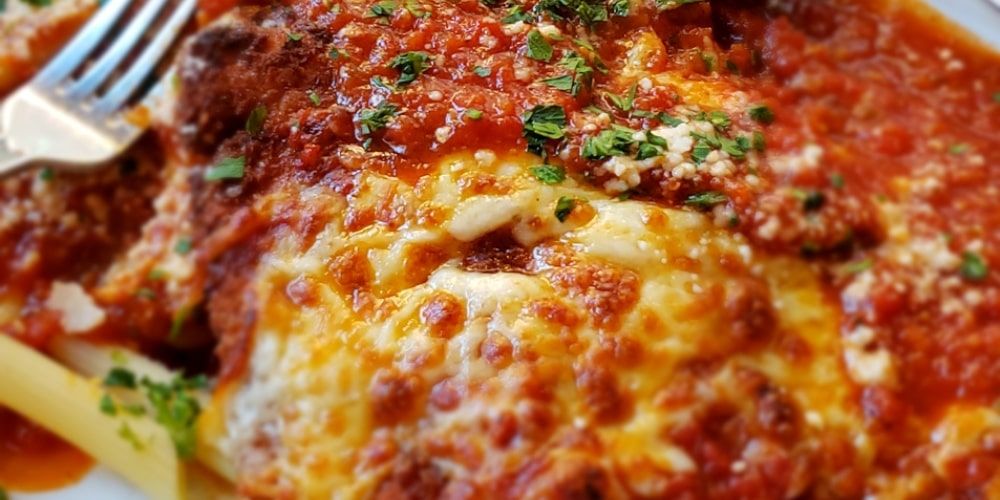
We hate to break it to you, but Chicken Parm isn’t Italian. You won’t find chicken served over spaghetti in Italy—ever. It’s not that Italians hate the idea (okay, we probably might), it’s just not part of traditional cuisine. If you want chicken for lunch, try pollo alla cacciatora. If you are feeling inspired to cook, here’s how to make an authentic Italian Parmigiana.
1. All pasta comes smothered in sauce
One of the most common American misconceptions about Italian food is that pasta must be drenched in sauce until it’s barely visible. Actually, the sauce’s role is to enhance the dish, not to overpower it. So, if you’re used to piles of sauce, prepare to be surprised by Italy’s more delicate approach.
Tips to Eat Like a Local in Italy
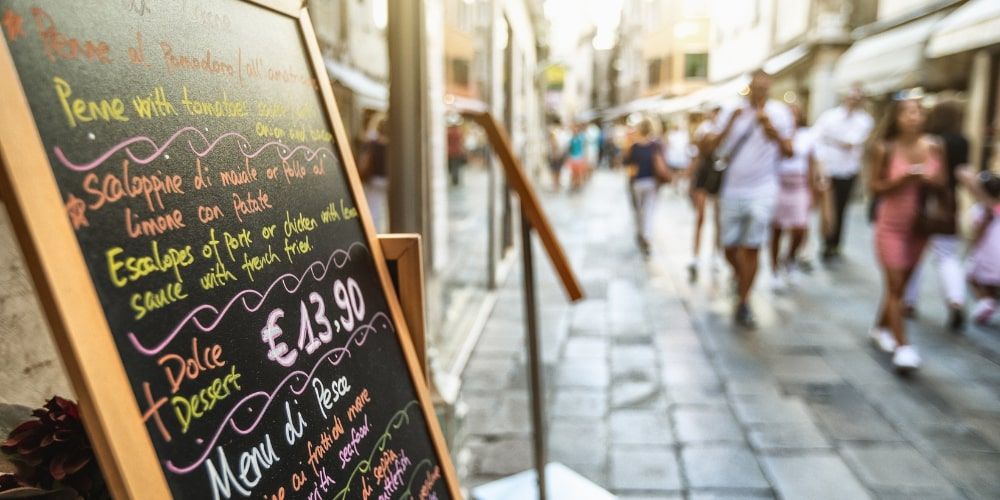
Knowing how Italians really eat can help you sidestep some of the most common Italian food mistakes Americans make.
- First rule: never ask for cheese on seafood pasta. It’s one of those unspoken culinary boundaries.
- Also, don’t be surprised if the bread isn’t (always) free: pane e coperto (bread and cover charge) is standard and usually noted on the menu. It’s not a scam, it’s just how it works.
- Understand the menu structure: antipasto (starter), primo (pasta/risotto), secondo (meat/fish), and contorno (side). They’re separate courses, not one big plate.
- Never drink coffee or milk at lunch. Italians only sip espresso after eating. During the meal, the options are simple: water, wine, or maybe Coca-Cola if you’re under 13 (or feeling rebellious).
- Skip the tall lattes: American coffee sizes don’t exist here. Quick and strong espresso is the default. A cappuccino after lunch might earn you a puzzled look.
- Talk to your waiter/waitress: they can be your best friend when it comes to choosing the right dish and pairing it properly. Also, wait for the waiter/waitress to bring the bill (they won’t unless asked).
- Tipping is not expected like in the U.S., as service is often included. But if you’ve had a great experience, leaving a tip is always appreciated and never refused.
- Don’t plan to eat dinner at 6 p.m.. One of the most overlooked Italian cuisine facts is how important timing is. Lunch usually runs from 12:30 to 14:30, and dinner rarely starts before 20:00. Many kitchens aren’t even open outside those hours, unless you’re in a tourist-heavy zone, which brings us to the next point.
- Those laminated “Menu Turistico” signs might seem convenient, but they often mean food made for speed, not quality. If you see spaghetti Bolognese and Chicken Parm on the same menu, a street host waving you in, stereotypical décor, suspiciously low prices, and only tourists at the tables, it’s a clear sign to steer clear.
- And finally, don’t be afraid to ask for local recommendations.
For more insights, have a look at our tips for dodging the classic tourist traps.
Experience Real Italian Food Culture

One of the key Italian cuisine facts that often surprises tourists is how local and seasonal ingredients shape every meal.
In quality restaurants (which are not necessarily expensive), certain dishes only appear when fresh ingredients are at their peak.
That said, it’s important to note that this approach isn’t always the norm everywhere. Many places maintain the same menu year-round, but often at the cost of freshness and taste. That doesn’t mean you can’t still enjoy a good dinner, but you need to be aware of what you’re choosing and what to expect.
Another thing to keep in mind is that quality food doesn’t necessarily come with a hefty price tag. Numerous local trattorie and osterie offer excellent meals at fair prices. Of course, sometimes higher prices reflect better ingredients and care, but that’s not always the case. You might be surprised at how well you can eat for very little compared to some super famous, flashy restaurants with prime locations.
Embracing regional, seasonal eating and supporting local producers is the best way to move past Italian food myths. In that sense, buying at local markets or scouring the street food scene is a key part of experiencing authentic Italian food culture. Far from being a “budget option”, these are great ways to see how Italians shop and eat every day and break free from common Italian food myths.
Want the Real Deal? Try These Experiences
If you want to move past the usual American misconceptions about Italian food and really eat like a local, it’s time to get stuck in. These experiences will earn you serious foodie cred.
Food Markets
Testaccio Market in Rome, Mercato di Sant’Ambrogio in Florence, and Pignasecca in Naples are the places to be for fresh, seasonal ingredients sourced from local farmers and producers. Other locals’ favourites that can be pretty interesting for tourists are Mercato Centrale in Milan and Ballarò Market in Palermo. Anyway, it doesn’t matter where you are, because you’ll always find a mercato rionale for your daily shopping. Ask the locals and they’ll tell you where to go.
Cooking Classes
Taking a cooking class is a fantastic way to learn how to cook like an Italian nonna, even if you are a 30-something Californian male surfer. Master the art of making fresh pasta from scratch in Bologna, attend classes focused on traditional pesto in Liguria, or discover classic Tuscan recipes in Florence. Campania offers excellent workshops where you can learn to make authentic Neapolitan pizza from the experts.
Agriturismi
For a proper farm-to-table experience, stay at an agriturismo, a working farm where you can sleep overnight and enjoy home-cooked meals made with seasonal ingredients straight from their garden or livestock. Agriturismi are about as far from tourist-trap menus and fast food as possible. Regions like Tuscany, Umbria, Le Marche, and Puglia are full of fantastic spots, many of which are favourites among locals and travellers.
Join a cooking masterclass in RomeItalian food myths - FAQs
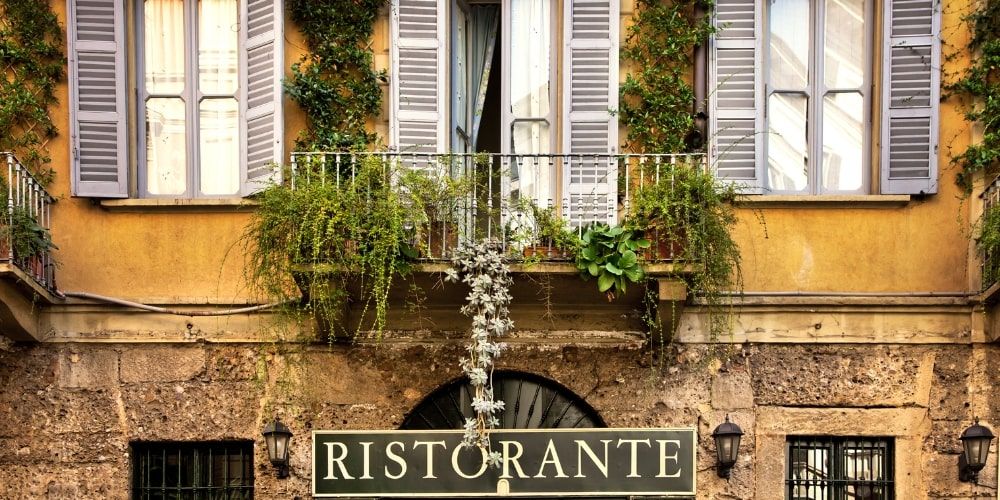
What are common Italian food myths?
Widespread Italian food myths comprise the belief that Italians eat spaghetti and meatballs in the same dish, garlic bread is served with every meal, balsamic vinegar goes on everything, and the Italian dressing is actually Italian. These are mostly American misconceptions about Italian food, often based on Italian-American traditions that evolved separately from the cuisine in Italy.
Do Italians really eat pizza with pineapple?
No, and most Italians would rather not talk about it. Pineapple on pizza is seen as a joke or provocation. Italy has a wide variety of pizzas, but sweet fruit rarely makes the cut.
Is Italian food in America different from Italy?
Yes, dramatically. Italian-American cuisine has its history and identity, often based on adaptations made by immigrants, but the difference is at the heart of many Italian food myths. Dishes like Chicken Parm or Fettuccine Alfredo are rarely found in Italy. Real Italian cuisine is usually far simpler than its American counterpart.
Is fettuccine Alfredo Italian?
Technically, yes, but not in the way it’s known abroad. The original Alfredo, created in Rome in the early 20th century, was just pasta, butter, and Parmigiano. No cream, no heavy sauce. It’s virtually unknown in Italy today and considered one of the most persistent Italian food myths.
Can I order a latte in Italy?
You can, but you’ll just get a glass of milk. If you want what Americans call a “latte,” you need to ask for a caffè latte. And remember: milky coffees like cappuccino or caffè latte are usually reserved for breakfast.
Why don’t Italians use garlic bread?
Because garlic bread, as it’s known abroad, doesn’t exist in Italian cuisine. You’re more likely to find bruschetta: grilled bread with olive oil, fresh tomatoes, or other seasonal toppings. Garlic may be used, but subtly and never slathered on buttery loaves.
About the author
Written on 31/07/2025

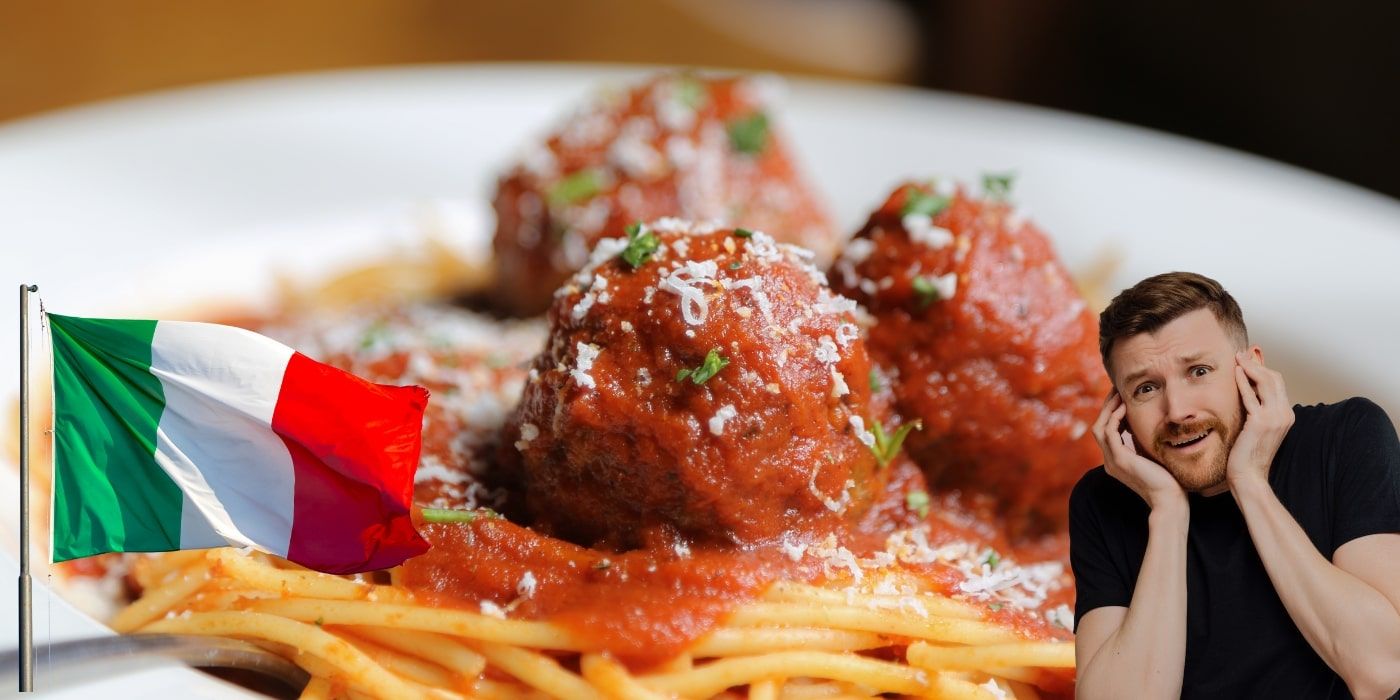

Lorena Calise
Think Italian dressing is Italian? Think again. These Italian food myths will surprise you (and amuse your Italian friends).